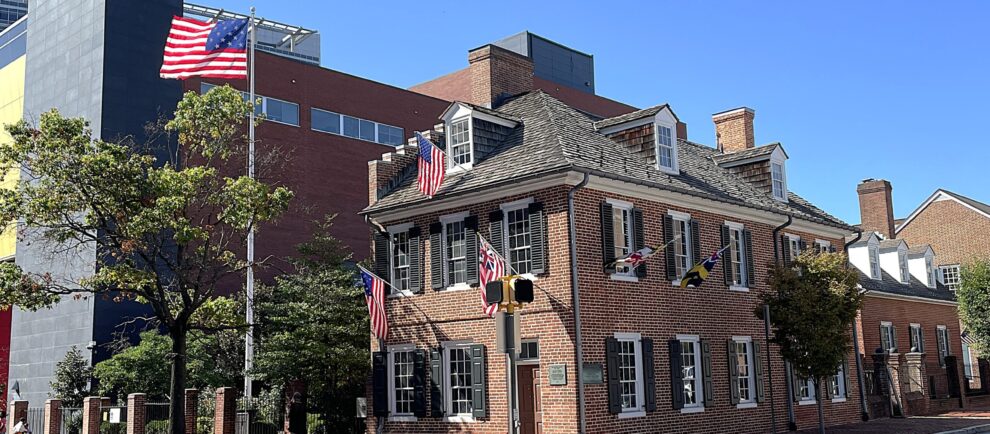Highlights from the Flag House’s Collection of 19th-Century Women’s Fashion
When spring comes, women being to exercise their minds as to what they are to wear to be in fashion and show off their charms. Everyone may wear garments of any period or non provided they have big sleeves and revers or frills on their bodices.”
– Women’s Clothing in the Nineteenth Century, C. Willett Cunnington
As the weather warms and the colors of nature spring forth from the ground, a change in women’s dress was undertaken with much enthusiasm. Flimsy dresses in a “modified empire” style made of silk foulard, jabots of lace, and satin ribbons of heliotrope, grey, art bronze, peacock blue, grey, shards of orange, jonquil, and dull green wear taken from wardrobes to replace the velvet and wool frocks of the darker months. Some of the favorite color combinations of the women of the 1880s were browns and greens, pink with bright yellow, salmon and ruby, and cardinal and dark blue, appropriate to the feminine attitude of the day.
In the spring of 1888, the newly married Mrs. William Fletcher Pentz likely paired her custom wedding bonnet with a fine dress of grey spring-time silk adorned with touches of pinks and greens. While white was the highest fashion for wedding gowns after the 1840 nuptials of Queen Victoria and Prince Albert, it was not required. Brides could still choose to wear their finest dress in a color of their choosing so that it could be worn again. Victorian etiquette did dictate that high necks and long sleeves were still the standards for daytime weddings.
By 1900, the Victorian’s hold on social etiquette of dress began to loosen. The use of gold kid for the custom evening slippers on exhibit is unusual for their date of 1900, as it was not until the 1920s that metallic leathers became common for women’s evening shoes. Objects such as this challenge our conventional view of history, and it is hard to posit for what occasion such extraordinary shoes would have been worn.

Wedding Bonnet
O’Neill Millinery and Fancy Goods, 1888
Baltimore, Maryland
This gray straw bonnet with matching ribbon, dot lace, and delicately colored flower container was worn by the donor, Mrs. Betty Houck, on her wedding day to Dr. William Fletcher Pentz, April 1888. Dr. Pentz was a member of the Maryland Legislature from 1898 until 1901. The Pentz-Trisler families were among the first donors to the Flag House’s collection and had strong familial ties to Baltimore’s defenders during the War of 1812.
Trisler-Pentz Collection of the Star-Spangled Banner Flag House
FH1962.5.2, Gift of Mrs. William F. Pentz

O’Neill, Millinery & Fancy Goods
Founded in 1882 by Thomas O’Neill, O’Neill’s Department Store began as a dry goods supplier at Charles and Lexington Streets. The store and owner were well known for their specialty wares, and Thomas O’Neill’s presence at the front door at 8:30 each morning outfitted in spectacles, striped trousers, black dress coat, and his distinguished red mustache. After the department store survived the Great Fire of 1904, O’Neill purchased the entire block on the east side of Charles Street to Franklin Street, opening several other buildings. Thomas O’Neill died in 1919, bequeathing the store to its employees. The store closed in 1954 and was demolished in 1961 as part of the Charles Center urban renewal project.

Evening Slippers
c. 1900
Baltimore, Maryland
Pair of gold kid leather, evening slippers custom made and gently worn. Feature braided bows at the foot opening and a slight heel flared at the base.
Wheeler Pinchbeck Collection of the Star-Spangled Banner Flag House, FH1963.2.2, Gift of Mrs. Frances Sevier
Jabot
Rose Point Lace
c. 1850
Wheeler Pinchbeck Collection of the Star-Spangled Banner Flag House
FH1962.7.4, Gift of Mrs. Frances Sevier
Jabots were used to fill in the deep V necklines of women’s dress bodices.






